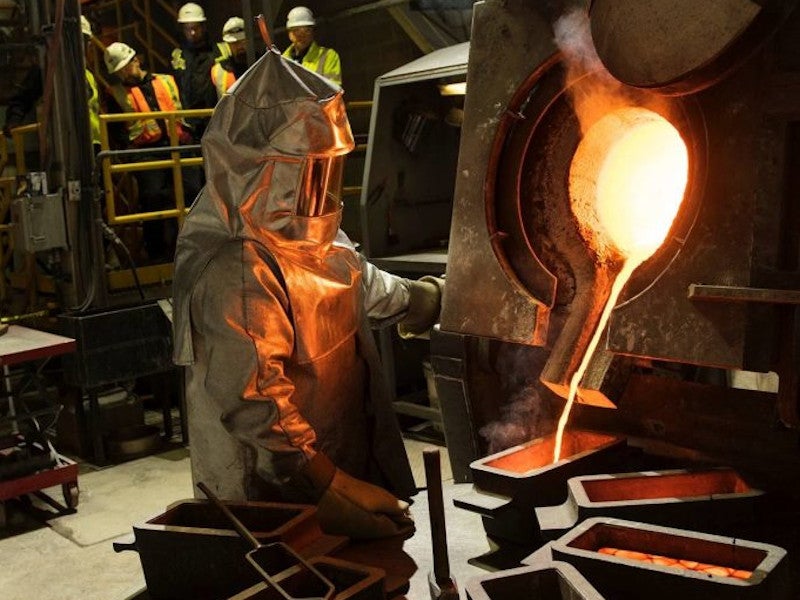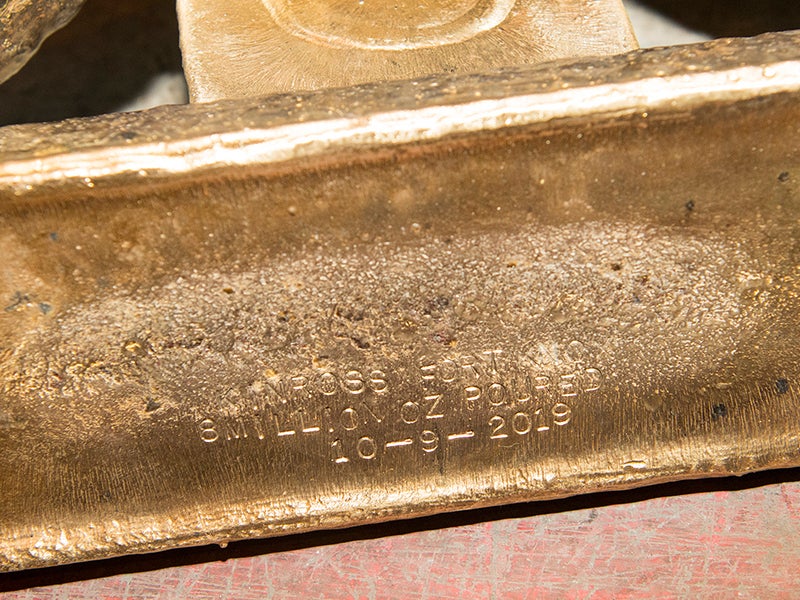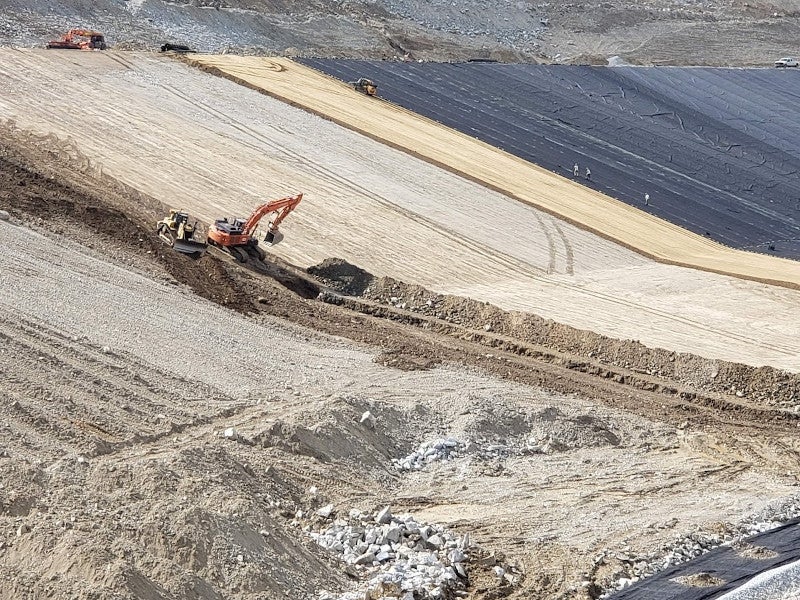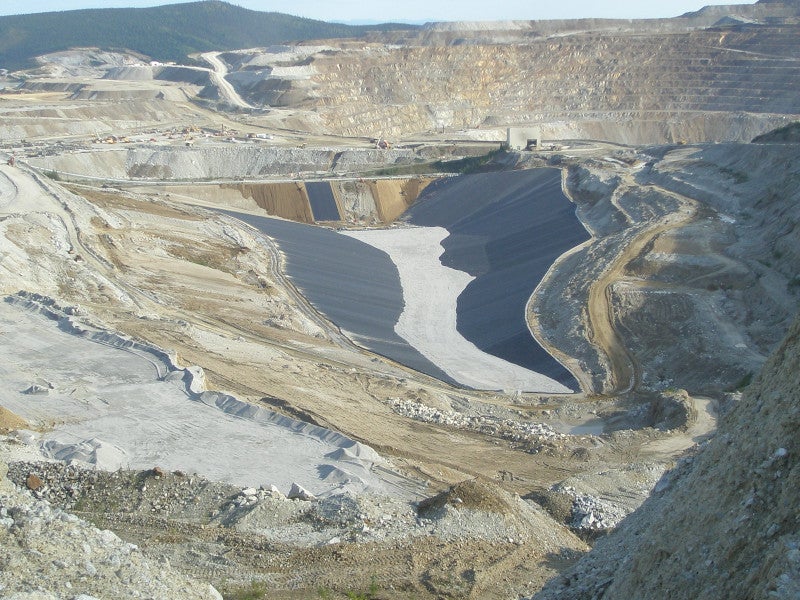The Fort Knox gold mine is an open-pit mine located near Fairbanks, Alaska, US. Owned and operated by Kinross Gold, it is one of the largest gold producing mines of the company.
Kinross Gold announced the expansion of the Fort Knox open-pit mine in June 2018 after receiving mining rights to a 287ha land, known as Gilmore, in December 2017.
The Gilmore expansion project will extend the life of Fort Knox mine by ten years to 2030, with mining activities expected to be carried out until 2027 and leaching until 2030.
Based on a feasibility study completed in June 2018, the expansion will include the first two phases of a potential multiple-phase layback of the existing pit and the construction of a new heap leach pad. The project encountered initial ore in the fourth quarter of 2019, which was stacked on the existing Walter Creek heap leach pad.
The new leach pad will accommodate approximately 95% of the ore from Gilmore and stacking is scheduled to begin in the fourth quarter of 2020.
Gilmore is expected to add approximately 1.5 million ounces (Moz) of gold production to Fort Knox project over the life of the mine.
Fort Knox gold mine location, geology and mineralisation
The expansion project is located immediately west of the Fort Knox mine site, which is situated 42km away from the Fairbanks North Star Borough in Alaska.
The mine sits on land owned by the Alaska Mental Health Trust in the Fairbanks mining district, which is one of the largest gold-producing areas in the state. The project covers an area of approximately 3,521ha, including 2,358ha under mill site leases.
The mine site is accessible from Fairbanks by 34km of highway and 8km of unpaved road. Fort Knox is located 18km to the east of the True North mine.
The mining district is located in the Yukon-Tanana terrane, which contains polymetamorphosed and Paleoproterozoic schist of sedimentary origin.
The mineralisation in the mining district of Fairbanks is mainly present in the Fairbanks schist.
The mine’s gold mineralisation is hosted entirely within the Late Cretaceous Fort Knox granite pluton in quartz, quartz-sericite, pegmatite veins, shear zones, and stockwork zones.
Fort Knox gold mine reserves
The Gilmore expansion feasibility report increased the estimated proven and probable mineral reserves of the mine to approximately 3.4Moz.
The Fort Knox gold mine is estimated to contain proven and probable ore reserves of 255.81Mt at a grade of 0.3g/t, containing 2.8Moz of gold, as of December 2019.
Mining and processing at Fort Knox gold mine
The Fort Knox gold mine is mined by the conventional hard rock open-pit method using drilling, blasting, loading, and hauling.
The processing of the ore is performed through a CIL mill and the current Walter Creek heap leach (WCHL) facility. The production during the expansion is expected to be between 63Mtpa and 75Mtpa. The mine will transition to a 100% heap leach operation after the termination of mill processing in 2020.
The ore is processed via two processing lines, including a mill operation and a run-of-mine valley-fill cyanide heap leaching operation. The mill comprises a primary crusher, a semi-autogenous mill, two ball mills, gravity concentrators, agitated cyanide leaching, carbon-in-pulp (CIP) circuit, and a carbon elution and carbon regeneration circuit.
The heap leaching operation uses two parallel carbon-in-column (CIC) circuits. Tailings are detoxicated before being sent to the tailings storage facility.
The CIL mill operates throughout the year at a nominal capacity of 36,287 tonnes a day of fresh feed.
Run-of-mine (ROM) ore is hauled uphill from the pit and existing stockpiles and is dumped onto leach cells.
The Gilmore ore will be stacked at the new Barnes Creek Heap Leach (BCHL) pad which will operate in line with the WCHL leach pad.
The pregnant leach solution from the new 190Mt leach pad will be processed via the existing CIC circuits. Gold is recovered from a strip solution using electrowinning cells and poured into dore bars.
Infrastructure at Fort Knox gold mine
The site is accessible from the highway by the private Fish Creek Road. The infrastructure at the mine site includes mill complex, CIP and CIC tanks, a 630ha tailings storage facility (TSF), and buildings for primary crusher and control office, administration, security, warehouse and maintenance.
Other buildings at the site are a core logging facility, freshwater pump house, powder mag storage area, and cold storage and lay down. Fort Knox receives power from the Golden Valley Electric Association substation at Gold Hill via a power line. The mine consumes between 32MW and 35MW of electricity a month.
Water is pumped from the decant pond to support mill operations. Process water with reduced cyanide levels is sent to the decant pond in the tailings slurry. A freshwater supply reservoir, located on Fish Creek, is used to supply make-up water to the mill and the Barge Pond.
The mine site also has pipelines to serve multiple purposes such as freshwater, dewatering, heap leach, seepage reclaim, and decant.





